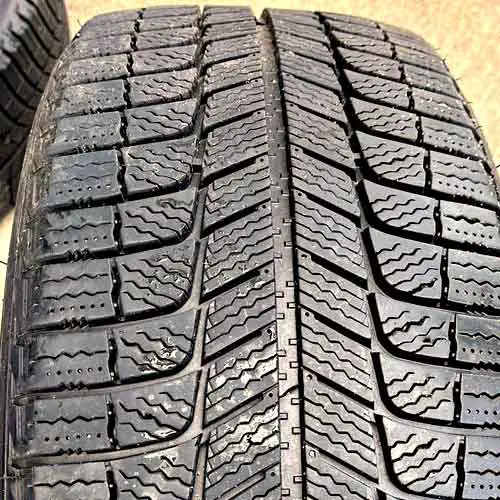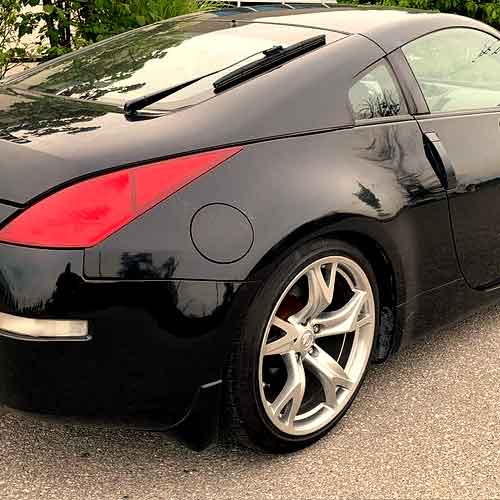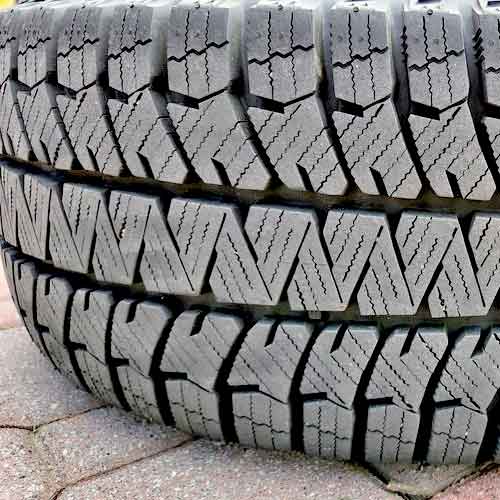Both the Bridgestone Blizzak WS90 and the Michelin X Ice XI3, are reputed for their impressive winter performance, but each has its unique strengths and weaknesses. In this article, we’ll dive deep into their performance categories, giving you a comprehensive understanding of how these tires fare against each other.

Tire Sizes
The Bridgestone Blizzak WS90 comes in 52 total sizes in 15 to 19 inches (wheels) with following specs.
- Speed ratings: T or H.
- Load ratings: SL or XL.
- Tread depth: 11 or 12/32″.
- Weight: 17 to 29 lbs.
- Tread warranty: None.
Review this tire in greater detail: https://snowytires.com/bridgestone-blizzak-ws90-review/
On the other side, the Michelin X Ice XI3 (used to) come in 14 to 19 inches rims with following specs.
- Speed ratings: T and H.
- Load ratings: SL or XL.
- Tread depth: 10.5/32″.
- Weight: 16 to 30 lbs.
- Tread warranty: 40k miles.
Tread Appearance
The Bridgestone Blizzak Ws90 is renowned for its solid and thoughtfully crafted directional tread pattern. Let’s check it out in details.

The tread is made up primarily of three prominent ribs, with the central one being seamless/continuous-running.
This main rib is decorated with wave-like sipes and slanted lateral slits, elegantly paired with in-groove notches.
And those notches then join up with the V-shaped incisions aimed towards both sides (facing the shoulders).
Speaking of which, the shoulder blocks also feature notches, though they cover both angles.
Meaning, the ones facing the central rib are lateral, and you also see another pair of these notches, further out, formed by longitudinal slits.
Moreover, these lugs also contain zigzag-shaped slits on them, combined with elongated wave-like sipes.
On the other hand, Michelin X Ice XI3 also comes up with a very unique pattern as well.

Let’s start form the middle.
So here you see a straight longitudinal slits in the middle-most area, which is engraved with small rides on the base.
These basically hold on to the snow particles and allow for amazing traction values. I’ll discuss more on this later.
The surrounding blocks are situated on two ribs, forming two more longitudinal channels, though they are more tough passing, (you can say).
They consist of lugs, having sharp edges (which are chamfered), and numerous wave-like siping.
The shoulder lugs are elongated, and have a more curving design.
And these blocks are laced with multiple-angled sipes, and wave-like, longitudinal, in-groove notches.
Directional Grip
The efficiency of directional grip predominantly relies on the tread’s central area, since it’s where the majority of the tire’s load is concentrated, (talking about when the tire rolls straight, like on highways).
Considering this principle, it’s not surprising that the Bridgestone Blizzak WS90 outshines its competitor in this respect. as the middle section of this tire is adorned with a continuous running rib, ensuring a steady ground contact as the tire propels forward in a straight line.
On the other hand, the Michelin X-Ice XI3’s center area features longitudinal grooves. And yes, the surrounding lugs, too, lack the streamlined structure necessary for optimum straight-line rolling.
Therefore, the Blizzak WS90 generally records shorter braking distances, making it superior in terms of directional grip.
Dry Handling
The tire’s lateral traction or handling is significantly influenced by the shoulder lugs.
As the tire navigates corners, the weight it carries shifts towards the tread’s edges (shoulders), and the interaction of these lugs with the ground dictates the handling performance.
So in this area, the Michelin X-Ice XI3 secures the lead, even though both tires showcase similar footprints.
The secret to its triumph lies in its shallower tread depth.
Although the difference is minimal, it plays a substantial role in handling.
Shallower tread depth means the lugs are less susceptible to flexing or bending as the tire corners.
This results in a more balanced steering feedback and superior handling on the X-Ice XI3.
Wet Traction
Wet traction hinges upon two major factors: the intricacy of the siping and the flexibility of the tread.
When it comes to these attributes, both tires perform remarkably well, as they both, well-equipped with plenty of multi-angled biters, provide nearly identical braking distances and handling times.
Though still, if you have to pick one here, I’d say, go with Blizzak, as the tire with it’s more aggressive siping pattern (featuring more teeth, if you will), gets to be 0.3 seconds better on wet handling lap times (on average).
Moreover, the tire also features a relatively softer rubber compound, so its sipes have a better efficacy to soak up the water particles coming underneath.
So Blizzak WS90 is although better, note that the difference is very marginal.
Tread Life
Winter tires typically suffer from shorter tread life, due to their softer rubber compound, which wears out relatively quickly.
Though, this rule, however, doesn’t hold true for the Michelin X-Ice XI3, which stands as one of the most long-lasting winter tires on the market.
So, what’s its secret?
The answer lies in its innovative tread compound. The rubber in the Michelin XI3 is considerably firmer and less susceptible to rapid wear.
In contrast, the Blizzak WS90 comes with a softer compound, which offers excellent adaptability in extreme temperatures but disappoints in the wear department.
That’s why it’s logical that Michelin offers a 40k miles warranty for the XI3, while Bridgestone doesn’t provide one for the Blizzak WS90.
Vibration Absorption
Tires are essentially auxiliary shock absorbers, as they cushion your ride from the imperfections of the road.
And having said that, among the two winter tire titans, the Bridgestone Blizzak WS90 takes the lead with its innovative compound.
It’s internal construction, basically consist of a softer nylon cap plies, and its outer rubber features a more thermal adaptive tread composition.
And together both of these provide a better settling of the vibrations, compared to Michelin XI3.
Noise Generation
Now let’s talk about the unseen enemy of a peaceful drive – tire noise.
But what causes noise? Well two things. First air that comes in (mostly through shoulder voids), hitting the tread walls.
And second, that impact echoing the walls around, producing in-groove resonance.
Now although both tires have really compact designs, which restrict a lot of air to come in and hit around, the Michelin X-Ice XI3 still manages to hold the upper hand.
This is thanks to its superior pitch sequencing technology, which creates a symphony of different tonal frequencies that harmoniously cancel each other out, effectively muffling the noise.
In simpler words, you don’t get as much groove resonance in this tire’s case.
So Blizzak is louder overall.
Snow Performance
When it comes to navigating snow, the Michelin X-Ice XI3 stands out. (I am talking about fluffy, soft snow here, by the way).
The tire basically is offering more in-groove biters, which effectively trap (more) snow particles.
And because of this, its tread makes snow contact on the ground (with that lodged snow).
It’s like making a snowball: snow sticks better to snow than it does to rubber, thereby creating superior traction.
On the other hand, the Bridgestone Blizzak WS90 isn’t able to do so. Its tightly packed, less aggressive tread pattern doesn’t catch as much snow, resulting in a lower snow collection efficiency.
So fluffy snow traction is seen better on Michelin XI3.
Ice Performance
Ice is the most slippery thing tires encounter, so here you need a ton of biters on the tread.
And that’s where Blizzak comes in with its thoughtfully crafted tread design, featuring angled cuts and V-shaped grooves that swing in both lateral directions, providing a much better grip.
This also goes for its more aggressive siping pattern, offering shorter braking efficacy on packed up snowy terrains.
On the flip side, the Michelin X-Ice XI3 although also features a lot of biters, they are still not enough to provide you with similar performance values compared to Blizzak.
Fuel Usage
When it comes to fuel economy, the game is all about the tire’s rolling resistance – think of it as the tread’s clinginess to the road.
Here, the Michelin’s tire steps up as the more fuel-efficient choice, even though both tires weigh about the same, and share similar tread designs.
So why is that the case?
Well Michelin XI3 has the advantage of shallower tread depth.
With this, its lugs aren’t that bending, as the tire maneuvers (especially corners).
And with less overall bending of the lugs, less heat generation is made, basically overall, less energy is consumed.
So you get a more fuel efficient tire compared to Blizzak WS90.
Summary
Based on my examination of various performance categories, it’s clear that both the Bridgestone Blizzak WS90 and Michelin X-Ice XI3 have their unique strengths and weaknesses.
While the Blizzak WS90 excels in terms of directional grip, wet traction, vibration absorption, and ice performance, it falls short when it comes to dry handling, tread life, noise generation, snow performance, and fuel usage.
On the other hand, the Michelin X-Ice XI3 shines in these areas but doesn’t perform as well in the categories where the Blizzak WS90 leads.











